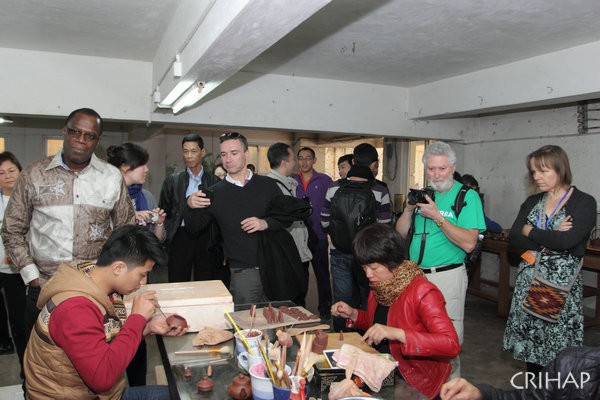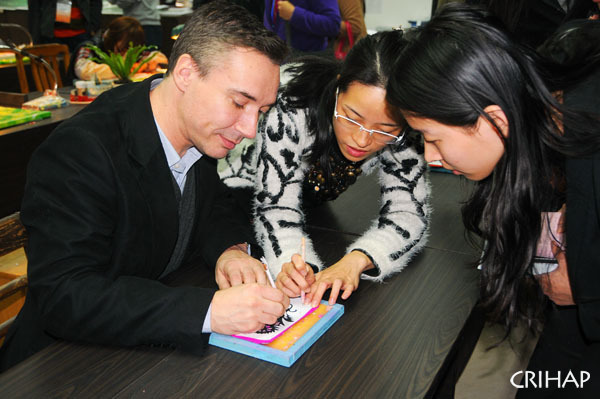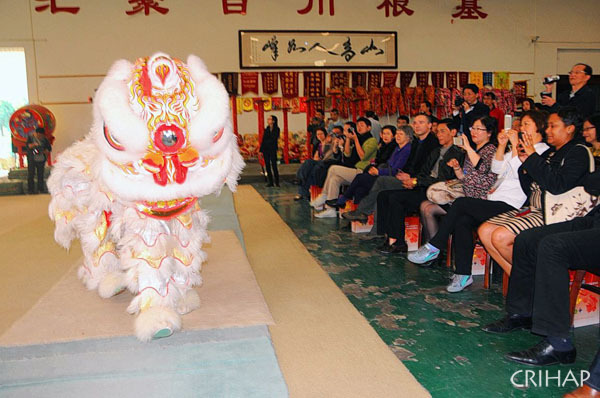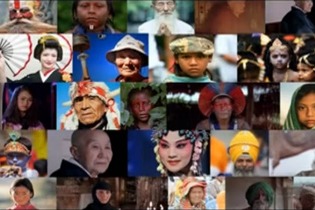Workshop on “Happy Chinese New Year and Safeguarding and Promoting Traditional Festivals”
★ Chaozhou embedded porcelain
Chaozhou embedded porcelain originated during the reign of Emperor Wanli (1573-1620) in the Ming Dynasty. Artisans trim and embed colorful porcelain strips to decorate buildings. It was included in the third batch of intangible cultural heritage of Guangdong province in 2009.
★ Fengxi red clay kettle

Representatives watch Fengxi a demonstration of red clay kettle making.
Fengxi red clay kettles originated in the middle of the Qing Dynasty. They are made from local red clay and undergo nearly 60 steps before one kettle is finally made. It is a combination of aesthetic and practical functions. It was selected in the third batch of intangible cultural heritage of Guangdong province in 2009.
★ Enamel vessel
The enamel vessel was mainly used by the royal household. Made of red bronze, zinc, tin, colored enamel and gold, it is expensive and complex to make such a vessel. It was selected in the fourth batch of intangible cultural heritage of Chaozhou city in 2009.
Field Research: Cultural heritage in Foshan
★ Shiwan pottery
Shiwan pottery can be dated back as early as the Neolithic Age. It can be categorized into figure sculptures, animal sculptures, household utensils and miniature sculptures. It was selected in the first batch of national intangible cultural heritage in 2006.
★ Guangdong paper-cuts

Mathieu Rofer Max Ferey, president of Debussy National Academy of Music, tries to make a paper-cut.
The major themes of Guangdong paper-cut include happiness, exercise, longevity, immortals, historical stories and animals. It was selected in the first batch of national intangible cultural heritage in 2006 and in the UNESCO Masterpieces of the Oral and Intangible Heritage of Humanity in 2009.
★ Guangdong lion dance

Demonstration of the Guangdong lion dance, Choy Li Fut (Kungfu), and Wing Chun (Kungfu).
The lion dance combines dance, martial arts and music. The lion has always been considered as an auspicious animal from ancient times. Thus the lion is indispensable for celebrations or festival activities. Today, the lion dance has become a popular fitness activity. It was selected within the first batch of national intangible cultural heritage in 2006.

Address: 81, Laiguangying West Road, Chaoyang District, Beijing, China
Zip Code: 100021
Tel: 86-10-64966526
Fax: 86-10-64969281
E-mail: crihap@crihap.cn
Leave us your e-mail address, we'll let you know about current events.



